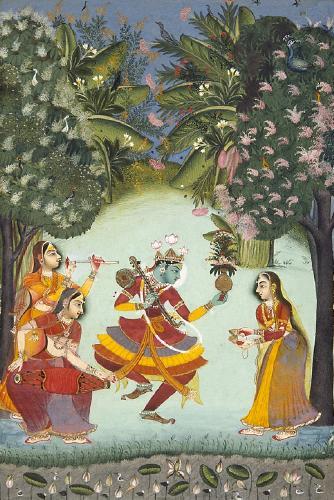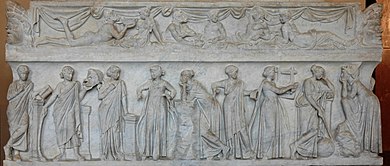A Lively Siberian Dance
His crime was spreading Judaism; his punishment was many years of hard labor in Eastern Siberia. That is where Reb Asher Sasonkin found himself in prison camp with about 3000 others. Most of them were political prisoners, incarcerated for being "anti-revolutionary," but there were some hard-core criminals sentenced for various crimes of violence as well. The prisoners were divided into small groups of twelve called "brigades," with each brigade being led by a "brigadier," who also was a prisoner.
After some time, R. Asher was transferred to a different barrack in the camp, under the supervision of a different brigadier. He was happy about it because he quickly found there a quiet unobtrusive corner where he could pray without having to worry too much about intruding hostile eyes.
That first day, while praying in his "spot," he overheard a conversation between one of the other prisoners in his brigade and his new brigadier.
"On Saturday only eleven of us will be working," the prisoner informed his leader. This Zhid ('Yid'-'Jew') refuses to work on their Shabbat."

The brigadier responded quickly, "Don't worry. With me he won't be able to pull any tricks. He'll work on Saturday too, like everyone else."
"I advise you not to start up with this Zhid," rejoined the prisoner, a non-Jew, "otherwise you might get ridiculed." [The stubborn, against-all-odds successful Shabbat observance in the labor camp environment of Reb Asher (and a few other Chabad chasidim) was well-known in most of the Soviet prison camps -YT].
The very next day was Shemini Atzeret. The brigadier came over to Reb Asher and said, "Be ready, in just a few minutes we are setting out to work."
Sasonkin firmly shook his head, saying that he could not work this day.
"And tomorrow?"
"Also not."
"And why not?" queried the surprised brigadier. "Neither today nor tomorrow is Shabbat."
Reb Asher explained quickly that these were the final two days of the Sukkot festival, so it was forbidden to work.
The brigadier recalled that in his youth he had seen Jews erecting flimsy wooden huts every autumn and camping in them for a few days. He smiled to himself and said, "Listen, I'm willing to allow you to not work, but you must leave together with us for the workplace and be there with all the other workers."
Reb Asher happily assented.
About 200 men arrived at the designated place, which turned out to be a construction site. It was a huge area enclosed by layers of barbed wire, filled with buildings and other structures in various phases of incompletion. The workers spread throughout the area to their assigned projects, Reb Asher ducked into a building that was a bit distant from the others and with no one else there. "A quiet place to davven (pray)." He thought to himself, and immediately began the morning service for the festival, which fortunately he knew by heart.
Absorbed in his prayers, he wasn't conscious of the hours flying by, when suddenly a young man from his brigade came running in. "Here you are!" he exclaimed. He began speaking very fast. Reb Asher could see that he was extremely nervous, frightened even.
"What are you doing? Don't you realize that it is already lunchtime? The officer discovered that you weren't present. He told the chief guard, who exploded in anger. He even threatened our brigadier that he would lock him in solitary confinement for 15 days. The brigadier is pleading and making every excuse he can think of, but the chief guard keeps insisting that since he is the brigadier, he is the one responsible and must be punished. Hurry! Maybe your appearance will calm down the officer."
The two of them ran as fast as they could to where their brigade was gathered. The brigadier immediately confronted Reb Asher. His face was pale and fearful. "This is how you repay the favor I did for you?" Reb Asher apologized sincerely, and tried to explain that he had lost track of the time while he was praying.
The brigadier calmed down somewhat, and instructed to serve lunch to the prisoners. To Reb Asher however, he insisted that he remain close to him and stay within eyesight. Meanwhile, Reb Asher was becoming quite apprehensive. "If the officer became so angered at the brigadier to the extent he was prepared to punish him with 15 days of solitary confinement, what will happen to me?" he worried to himself. He briefly considered running off and hiding somewhere until tempers cooled off, but he quickly realized that could backfire and complicate his situation even further.
While these thoughts were tumbling around in his head as he stood next to the brigadier all of a sudden the officer strode up to them. Reb Asher felt his blood was about to freeze in his veins. He quickly snuck a glance at the officer expecting the worst. Much to his surprise though, nothing happened.
The officer shot him a sharp, penetrating gaze, but then a brief smile played on his lips, and he continued on his way without saying a word.
When mealtime was ended, the brigadier told two other prisoners to be responsible for Reb Asher, threatening them with dire consequences if he should disappear again.
The sun set. It became evening. That meant it was already Simchat Torah, yet there he was, stuck in the labor camp under watchful eyes. He began to think about the holiness of the festival, its prayers that everyone prayed, and its songs that were sung in every synagogue. He recalled the joyous dancing and the happy faces. "But I, what kind of Simchat Torah can I have here in such a place? If only I could at least sing loudly a Simchat Torah song in honor of the festival."
At that moment, one of the two prisoners assigned to prevent him disappearing turned towards him and said, "You are supposed to be working just as we are. It is only because of your holiday that you are exempted. At least sing for us one of your lively Jewish holiday tunes."
Reb Asher thanked G-d in his heart. Almost immediately he responded to the request which so neatly matched his own desire and began to sing a Simchat Torah "hakafa" dance melody. His arms he loosely folded in front of his chest as if he were in shul and clasping one of the mantle-covered Torah scrolls. He closed his eyes and started to dance around in a circle while continuing to sing.
"These two gentiles think that I am dancing for their sake," he thought to himself, "but in truth I am dancing in honor of the Torah."
He continued to prance around enthusiastically, and danced and whirled for a long time. When he finally ceased, the two who had been watching him in amazement with big smiles, clapped their hands loudly and called out "Bravo, bravo! Great!"
This was just the beginning of his joyful "virtual" Simchat Torah. At the end of their workday, when the prisoners all gathered together to be counted, one of Reb Asher's 'escorts' addressed the assembly with a loud proclamation: "This Zhid knows how to sing and dance really well. Ask him for a demonstration and see for yourselves."
Implied was that this would be compensation for the long afternoon of work caused by his disappearance. Reb Asher didn't wait to be invited a second time. He leapt into the lively dance, even more energetically than before, all the while singing happy Simchat Torah songs one after another, while keeping his eyes tightly shut.
For the 200 prisoner onlookers it was somewhat of a bizarre sight to see a religious Jew hopping about and singing and dancing so energetically. They all wore broad smiles and clapped their hands loudly to the beat of each song's rhythm.
In those moments, totally absorbed in the rapture of his singing and dancing, Reb Asher forgot completely that he was in a grueling labor camp, in primitive distant Siberia, and forgot even that he was a prisoner. He remembered only that he was a Jew, and a chasid, and that the day was Simchat Torah. In his heart and soul, he was dancing furiously in the wild Simchat Torah celebration in the Lubavich synagogue of his beloved Rebbe, as he always did every year before, and prayed to be able to do year after year in the future, whether in Rostov or in Petersburg on in Brooklyn.
~~~~~~~~~~~~~~~~~
Source: Translated and adapted by Yerachmiel Tilles from the Hebrew weekly Sichat HaShavua #1082. (First published on //AscentOSafed.com .) Graphic by Rifca-Leah Goldberg of Tsfat for //KabbalaOnline.org.
Biographical note:
Asher Sasonkin[?- 5 Heshvan 5748 (Oct. 1988 C.E.)] spent many years in Siberia for the "crime" of helping to keep Judaism alive in communist USSR. After his release, he made his way to Brooklyn, where he served as a shammes in "770" (Lubavitch International Headquarters Synagogue) for the rest of his life, and where his fiery prayers inspired new generations of young chasidim






 Facebook
Facebook Unit 731 was set up in 1938 in Japanese-occupied China with the aim of developing biological weapons. It also operated a secret research and experimental school in Shinjuku, central Tokyo. Its head was Lieutenant Shiro Ishii.
Unit 731 was set up in 1938 in Japanese-occupied China with the aim of developing biological weapons. It also operated a secret research and experimental school in Shinjuku, central Tokyo. Its head was Lieutenant Shiro Ishii. To ease the conscience of those involved, the prisoners were referred to not as people or patients but as "Maruta", or wooden logs. Before Japan’s surrender, the site of the experiments was completely destroyed, so that no evidence is left.
To ease the conscience of those involved, the prisoners were referred to not as people or patients but as "Maruta", or wooden logs. Before Japan’s surrender, the site of the experiments was completely destroyed, so that no evidence is left.

 But the Unit was not only infamous for its vivisections. Some prisoners sent to Unit 731 were taken outside and tied to stakes. The Japanese would then test new biological weapons such as plague cultures or bombs filled with plague-infested fleas on them.
But the Unit was not only infamous for its vivisections. Some prisoners sent to Unit 731 were taken outside and tied to stakes. The Japanese would then test new biological weapons such as plague cultures or bombs filled with plague-infested fleas on them.

